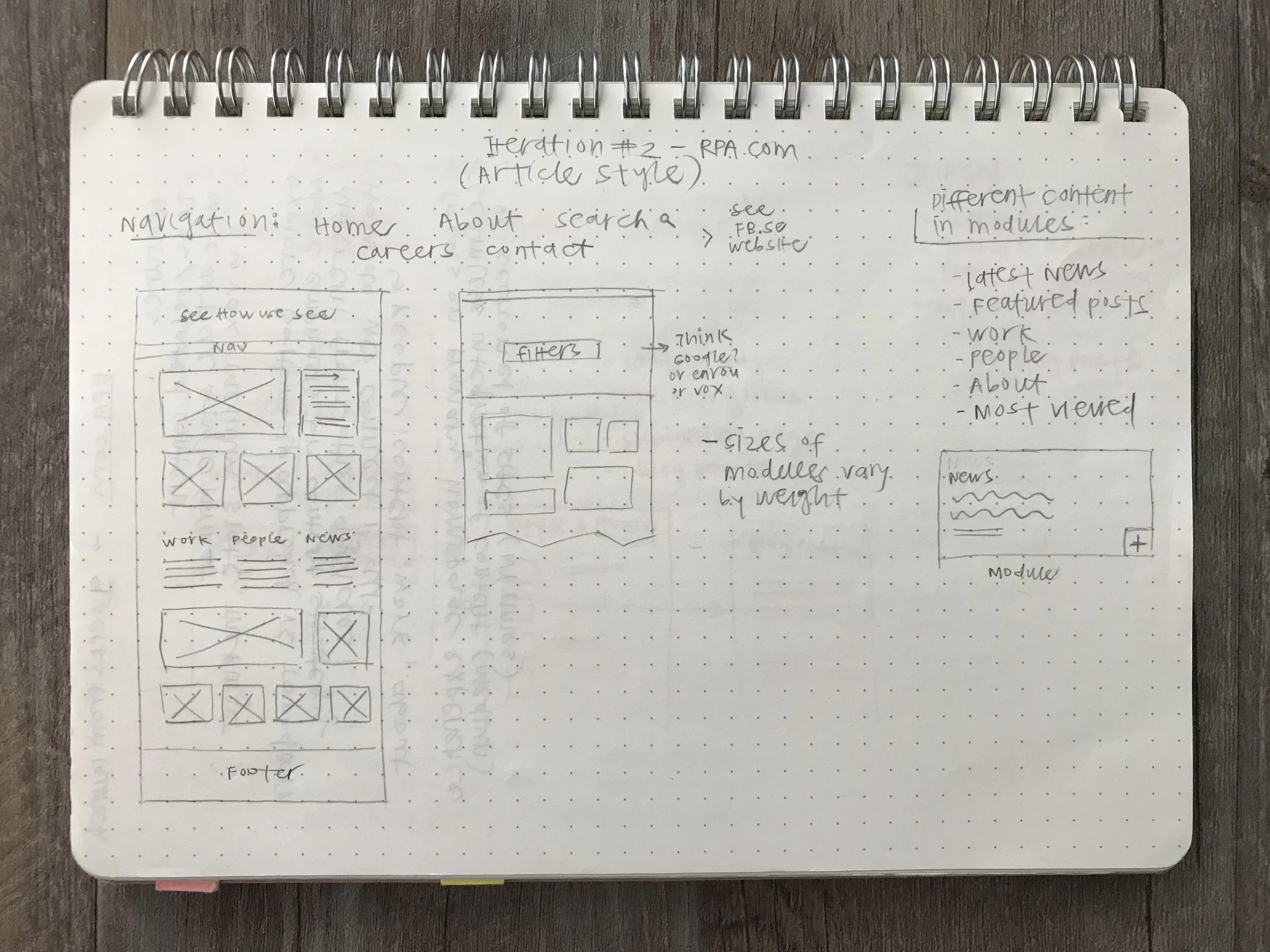RPA Advertising
Content Strategy, Information Architecture, Wireframes
Challenge
After changing the company manifesto from “Unlevel the Playing Field” to “People First,” RPA found a disconnect between its vision and its website. With a stronger focus on “seeing through the people lens,” the agency wanted a site that was mobile optimized, featured a variety of its work, showcased a glimpse of its associates and represented its new manifesto. Additionally, we were asked to build the site on a content management system for easy updates from a non-technical aspect.
Old Site
The previous site was designed as an experience to be filled with content. There was a lack of understanding about what kind of content the site would need to ultimately host. The site was limited to showing work as video content, which was problematic because the agency wasn’t able to showcase the other varieties of work it produced. With the redesign, we wanted to ensure that the nature of the content drove the experience.
Process
Building the ultimate rabbit hole
I wanted to design the ultimate rabbit hole for our users, by never leaving users at a dead end on the site. The designed everything on the website to be an article and built on a robust tagging system. With so much content to offer, the site allows users to pick the content they’re interested in—to choose the lens through which users view the site that is most relevant to them. If a user views an article about the Dole social campaign, at the end of the article, they’ll be served content related to the client or the type of work. The site empowers users to curate an experience that interests them most and embodies the agency’s People First perspective throughout the site.
Content Strategy
We wanted to ensure all our executives and stakeholders were aligned with the content the new site would have, as well as how it would be organized. Taking into consideration the business goals of the agency and who target audience is, we were diligent in making our site navigation speak to these objectives. I presented a content map that outlined what content will fall within each item in the navigation. This document above allowed our producers to understand what content needed to be created while others of us were focused on building the page structures.
Sketches
Wireframe Development
In effort to keep the homepage refreshed while still allowing specific content to be featured, we set parameters for the tiles on the homepage. Tiles were assigned to show certain types of articles, such as latest work, while others showed news. Each module would pull the latest publications from that respective category. We wanted to maximize users’ first impressions by allowing the page to show a glimpse of everything the agency has to offer.
Overall, by designing an article-based site, we created a site that is versatile and flexible enough to accommodate for as few and as many content pieces needed to tell the story–which was pivotal in showcasing the company’s work and culture.
We integrated our site with Wordpress to handle the CMS aspect of the site. We had multiple variations of “tags” excluding what Wordpress traditionally uses. With this in mind, we needed to make sure everyone was using the same nomenclature to avoid confusion. I created a reference guide that identifies and defines each aspect of our article cards and other site elements. This also made it easier for our developers and content owners to understand the functional specs and CMS.
Status & Impact
The site was designed to be exploratory in nature. Today, new articles can be added quickly and easily. Users will discover articles that are multiple videos and images long, while others might be text only. We continue to iterate on the site based on how users are using the site to best serve their needs.
We’ve seen an increased amount of time spent on the site ever since we launched this iteration of rpa.com compared to our previous iteration. On average, most users are visiting multiple articles, so the idea of letting users choose what “lens” they want to view the site through was a successful one. Since launching the website, the core team meets monthly to analyze site usage, recruiting and advertising efforts. We continually iterate on the site to adapt to the company’s needs and optimize to our target audience.
Visit the website: www.rpa.com



























